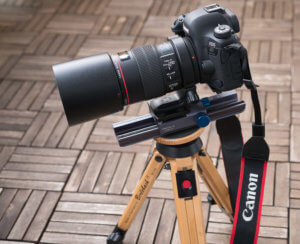Does it always have to be a macro lens?
Almost every camera manufacturer has a macro lens in its range, and there are also some lenses from third-party manufacturers. But does it always have to be macro?
Introduction

Practically all camera manufacturers, whether Canon, Nikon or Panasonic have at least one macro lens in their range. In the past, there were even manufacturers that offered a 50mm, a lens with 100mm focal length and sometimes even a macro lens with 180-200mm in relation to full frame.
Today it is rather the classic, i.e. focal length between 90 and 100mm and speed usually at f 2.8. Both to my Canon equipment and for the mFT cameras and now current for the Lumix S5 I have always had a macro lens. Currently is a Sigma 2.8/105mm DN Macro.
I recorded a short video about this once:
The selection
 Despite the speed of only f 2.8, such macro lenses are relatively large, heavy and sometimes quite expensive, if I think for example back then of my Canon 2.8/100mm Macro IS L. But at least today you have the advantage that there are hardly any bad lenses, at least among the established macros.
Despite the speed of only f 2.8, such macro lenses are relatively large, heavy and sometimes quite expensive, if I think for example back then of my Canon 2.8/100mm Macro IS L. But at least today you have the advantage that there are hardly any bad lenses, at least among the established macros.
They are all of excellent optical quality and of course you can use such a lens for portrait or landscape photography.
But does it always have to be a macro lens? Is a good (telephoto) zoom
The criteria
Macro lenses usually offer a reproduction scale of 1:1. This means that even very small objects can be photographed in a format-filling manner. But neither must be photographed format-filling in all cases nor use the maximum reproduction scale of 1:1 for every picture.

Is the above example not sufficient? Because this was taken with Lumix-S 70-300mm, for example. And it would go even closer, because this lens always reaches 1:2.

And even if this example was taken with 105mm Sima, you can’t see any difference with 70-300 for example.

I did this over the summer and used the 70-300 very deliberately at times for close-ups. And certainly other manufacturers have zoom lenses in the program that achieve comparable imaging scales.
The advantages of the telephoto zoom

A 70-300mm or a 70-200mm telephoto zoom lens also offers the advantage that you stay a little further away from the subject than with a 100mm macro lens.
This can be seen on the example of the picture. Already this picture is a detail, but it would have been smaller with 100mm, which would have reduced the quality/resolution.
This is an advantage with insects as well as when you need or want to use external light sources (flash or LED). Then you simply have more space to direct the light.
And the larger aperture on macro lenses is nice, but I have very rarely shot close-ups with f 2.8. Most of the time you want to stop down a bit because of the already shallow depth of field, so then the lower speed hardly matters.
Conclusion
If you often need a magnification of 1:1 or even larger, you will hardly get around a special macro lens. Otherwise, however, you can get along (almost) just as well with a telephoto zoom lens that achieves a reproduction scale of 1:4 or 1:3. How do you see it. Do you use a macro lens?
ciao tuxoche



